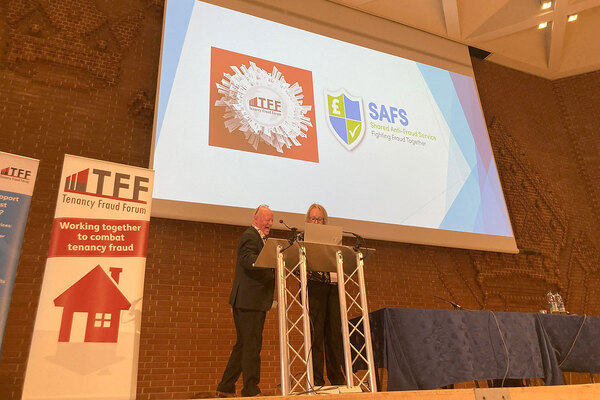You are viewing 1 of your 1 free articles
Notice to quit the Work Programme
Housing associations are leaving the Work Programme – the coalition government’s great hope for getting unemployed people working. Paul Hebden finds out why

When it was launched in June 2011, the £5bn Work Programme was hailed as the coalition’s answer to getting unemployed people into jobs.
On paper, the scheme, whereby the government pays contractors to provide training to unemployed people on job seeker’s allowance, had a lot going for it. Unlike previous government efforts, the Work Programme’s funding model pays by results.
The programme appeared to present an enormous social and commercial opportunity for landlords. More than half (56%, the Centre for Economic Inclusion and HACT reported in 2012) of working-age social tenants - 3.5 million people - are out of work, and 70% of landlords undertake employment initiatives anyway. The government expected the Work Programme to engage 25% of these working-age tenants.
Enthusiastic social landlords were among the first contractors to sign up to the scheme. But three years later, a catalogue of problems with the Work Programme has meant that less than half the original cohort are still involved.
In 2011, the Department for Work and Pensions (DWP) listed 15 social landlords and homelessness charities as being on its Work Programme supply chain.
By 2013 there were 13, of whom six said they were not involved with the programme when contacted by Inside Housing. These include Hyde Housing Group, Horton Housing Association, Your Housing, Langley Housing Trust, and homelessness charity Crisis, which is a vocal critic of the scheme and attempted to have its name removed from the list.
Similarly, homelessness charity Shelter was listed on the supply chain in 2013, despite withdrawing in 2011 because of concerns about the ‘complex’ link between volunteering and benefit entitlement on the programme.
Homelessness charity St Mungo’s Broadway (or St Mungo’s as it was then known) is listed as being a part of the 2013 supply chain list too - despite having withdrawn after less than a year in May 2012 without a single referral.
The DWP was unable to explain why organisations that are not taking part in the Work Programme are listed as being involved.
The list of providers heading for the exit continues: the Single Homeless Project (SHP), a London-based homelessness charity, says it left the programme in 2012, less than a year after signing up, over concerns that many of the people referred to the charity were not ready for work.
And last month, as revealed by Inside Housing, one of the scheme’s most ardent supporters from the housing sector, Bromford Support, part of the Bromford Group, admitted it would be leaving the programme in 2015, citing concerns about the funding model and the appropriateness of the referrals it had received.
The number of landlords that remain involved in the Work Programme now appears to be as low as eight - although many of these refused to comment on their involvement, meaning the number could be lower still.
Affinity Sutton and Framework Housing Association confirmed they are still taking part.
However, Places for People Scotland Care was newly listed on the supply chain in 2013, but refused to confirm it is a Work Programme provider. Similarly, Amicus Horizon, which has been listed as part of the supply chain since 2011, did not respond to Inside Housing’s queries. Sanctuary Group and New Charter Housing Trust also declined to comment on their involvement.
Line of fire

The scheme has been attacked in the media on many fronts, most notably over its use of mandatory work activity - also known as ‘workfare’ - which requires some participants to undertake unpaid work in return for unemployment benefit.
Cait Reilly, who was mandated to work for Poundland under the Work Programme, is taking the DWP to the European Court of Human Rights. Ms Reilly had to do mandatory work activity in return for benefits or have her benefit sanctioned.
However, for social landlords, the main frustration appears to be with the ‘payment by results’ model that underpins it. This, landlords say, has led to a lack of referrals and inappropriate referrals of people who are not able to work, making ‘results’ hard to achieve.
Liz Rutherford, chief executive of Single Homelessness Project, says: ‘The problem that emerged for us was that the people being referred to us needed pre-employment support, not employment support.
‘Those who were referred to us were not job ready. They might be people who were sleeping rough, or with severe mental health difficulties or people with an addiction. They were people who basically needed to deal with these [issues] before looking for work.’
In addition to people unemployed and claiming job seeker’s allowance, the Work Programme is also focused on claimants who receive Employment and Support Allowance (ESA).
Kirsty McHugh, chief executive of the Employment Related Services Association, says that the Work Programme has been ‘a step into the dark for this group of people’.
‘There are horrendous levels of people out of the workforce on ESA and you could argue that some have been “parked” by the system.’
One aim of the Work Programme was to get ESA claimants back into the workforce. But the phenomenon of ‘parking’ remains a problem for housing associations that have found themselves lower down the Work Programme supply chain.
There is concern that ESA claimants have been made low priority or ‘parked’ and referred on to housing association because they are unlikely to generate a payment because they are difficult to get into work. These cases are often the ones that get referred to second-tier contractors such as landlords.
Bromford Support cites the example of Tom (not his real name), who was sleeping rough and unemployed. Yet, when he was referred to Bromford Support, he was claiming ESA and had been deemed capable of ‘job-related activity’.
This was not the case. Tom needed food, shelter and help with his health. Although Bromford managed to do some positive work with him, none of it was covered by the Work Programme’s payments-by-results system.
The Work Programme payments due to Bromford would never have covered the level of engagement needed. Bromford’s contact with Tom ceased last year. There is no record of what has happened to him since.
Landlords say the payment-by-results structure has led to big prime contractors further up the supply chain ‘creaming off’ the claimants most likely to get into employment to increase the likelihood of getting paid.
John Wade, managing director of Bromford Support, explains: ‘[Prime contractors] would have already modelled, for example, that, if they got 28% of every 100 people into work, then they’ve done fine [as a return on their investment].
‘But we were getting referred to us people that the prime [contractor] never in a million years expected to get into work.’
Ms Rutherford echoes this trend: ‘There’s an assumption that something like 30% of those referred to the Work Programme will get a job anyway…
‘But none of our referrals were [easy to find work for]. Some had never worked. Some were just so far away from work.
‘We felt that the funding arrangements, in terms of payment by results, should have been different for providers at our level.’
Positive role
Not all providers have reported such negative experiences. A spokesperson for Affinity Sutton, says that of the 655 people referred to its Work Programme scheme, 392 got jobs and of these 149 continued to be in ‘sustainable employment’.
Framework Housing Association, which continues to be a Work Programme provider, declined to provide details on its track record.
However, most landlords argue that a revamped system of payments on the programme should take into account the type of intensive ‘pre-employment’ work needed to engage with people in receipt of ESA with specific housing, health or other issues, ahead of looking for a job.
Furthermore, some also want a change to the Work Programme’s use of sanctions as a stick to encourage people back into employment. Work Programme providers have the power to ‘raise a doubt’ against people referred to them if they feel the client is not doing enough to get employment.
This can lead to an individual being stripped of their benefit or sanctioned for between four weeks and three years. Since the Work Programme started in 2011, 445,948 sanctions have been issued by providers to December 2013, and 86% more sanctions have been issued than job outcomes achieved, reports Dr David Webster, an honorary senior research fellow in urban studies at Glasgow University.
Ms Rutherford from Single Homeless Project feels this has been a step too far: ‘As a charity, we would go to a lot of trouble to engage and try to engage with clients.
‘In those circumstances there was pressure to “raise a doubt” about that person. We were under pressure, by virtue of the way the Work Programme works, to sanction people. But it just does not sit well with our values.’
The charity refused to raise a doubt against any of its clients.
Affinity Sutton says it does sometimes recommend sanctions against the people it is referred, and Bromford Support says it has ‘raised doubts’ against people on its scheme.
ERSA is consulting with Work Programme providers about their use of sanctions.
Ms McHugh says: ‘Providers want to be able to make a judgement themselves as to whether there is good reason why a client has or hasn’t broken the conditions of their benefit. But right now the system does not allow this.
‘For political reasons, this government likes a “stick”, but I think we need a better evidence base.’
Many landlords would argue that, more fundamental still, there needs to be a new fit-for-purpose employment scheme to replace the Work Programme.
Work Programme by numbers
£2.8bn Department for a Work and Pensions’ (DWP) forecast of total payments to prime contractors between 2011 and 2020
2.1 million DWP’s estimate of number of people referred to the programme 2011 to 2016
£450m DWP’s predicted total savings to benefit spending from the Work Programme compared with the baseline agreed with the Treasury
296,000 job outcomes to March 2014
445,948 sanctions by Work Programme providers berween the start of the Work Programme in June 2011 and December 2013.
86% more sanctions have been issued than job outcomes (239,080) to December 2013.
Source: NAO 2014, Webster, D, May 2014













